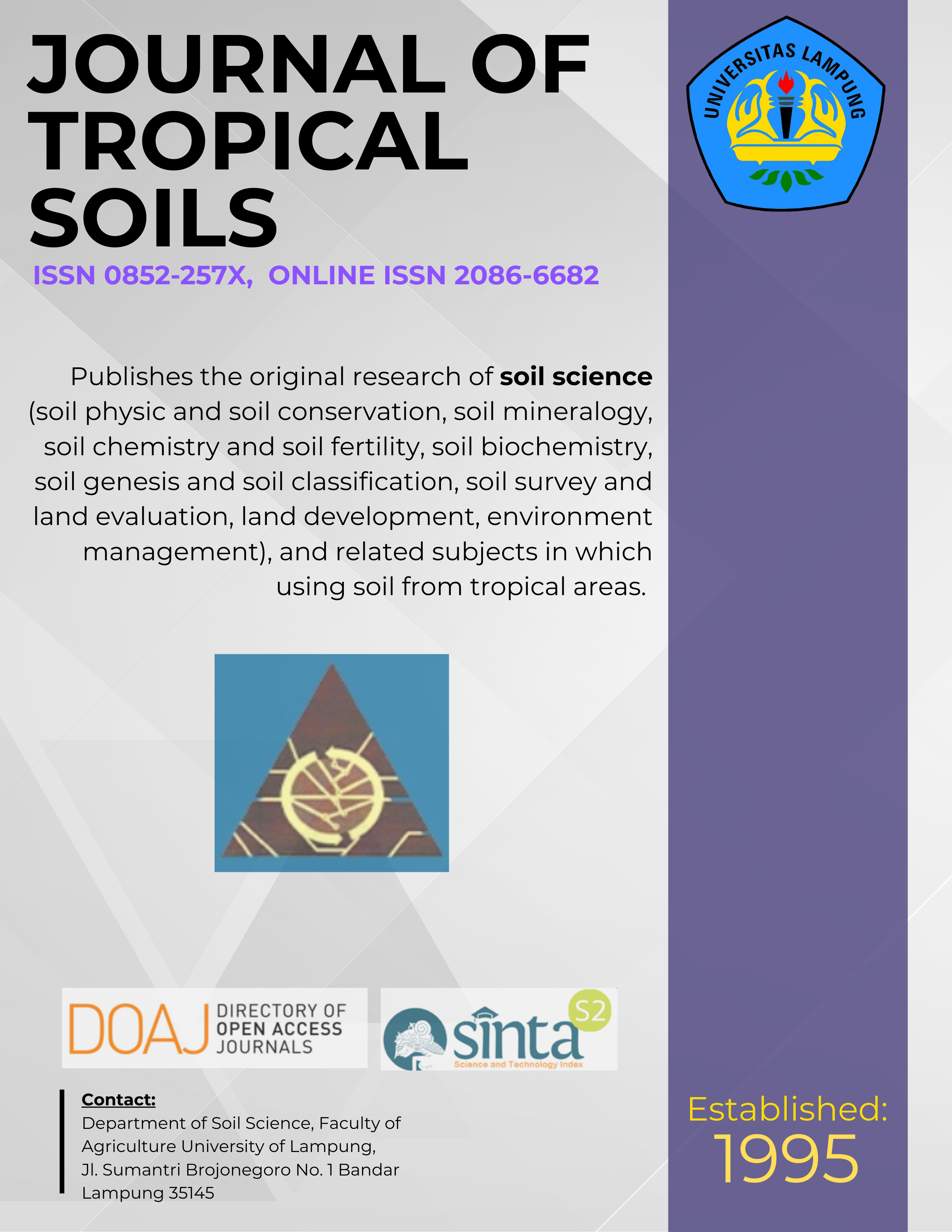The Effects of Mixed Source Fertilizer Application on Vertisol Fertility and Growth of Mustard
Main Article Content
Abstract
Soil fertility is a crucial factor determining the growth and yield of plants. The increase of nutrient content and availability in soil can be achieved by fertilization. A field experiment was conducted using a Randomized Completely Block Design (RCBD) with two factors and three replications in order to study the effects of Mixed Source of Fertilizer (MSF) application on the nutrient contents in Vertisol and its relationship to the growth and yield of mustard. The first factor was the three MSF formulas (F1, F2, F3) and second factor was the doses of MSF (0; 2.5; 5.0; 7.5; 10 Mg ha-1) applied to the soil. At the end of the experiment, the soil pH, CEC, organic-C, total-N, available-P and exchangeable-K contents were measured. The results show that there are no significant differences on the soil chemical characteristics, such as pH, organic-C content, available-P, exchangeable-K, -Ca and -Mg measured after application of different MSF formulas to the soil. Meanwhile, the increase of MSF doses applied to the soil significantly increases organic-C content, total-N, available-P and exchangeable-K in the soil. The significant increase of available-P (by 29.13%) and total-N (by 24.1%) occured after application of MSF at 5.0 Mg ha-1 and the increase of exchangeable-K (by 50%) is achieved after application of 7.5 Mg ha-1, in comparison to that without MSF application. The height and fresh weight of mustard increase in accordance with the increase of MSF doses applied. The application of 10.0 Mg ha-1 MSF results in the highest height and fresh weight of the mustard up to 63.9% and 620%, respectively. The height and fresh weight of mustard are positively correlated to the total-N, available-P and exchangeable-K in the soil. The MSF is an alternative fertilizer that can be used to improve Vertisol fertility and plant growth.
Â
Downloads
Article Details
Section
License for Authors
Authors who publish with this journal agree to the following terms:
- Authors retain copyright and grant the journal right of first publication with the work simultaneously licensed under a Creative Commons Attribution License that allows others to share the work with an acknowledgement of the work's authorship and initial publication in this journal.
- Authors are able to enter into separate, additional contractual arrangements for the non-exclusive distribution of the journal's published version of the work (e.g., post it to an institutional repository or publish it in a book), with an acknowledgement of its initial publication in this journal.
- Authors are permitted and encouraged to post their work online (e.g., in institutional repositories or on their website) prior to and during the submission process, as it can lead to productive exchanges, as well as earlier and greater citation of published work (See The Effect of Open Access).
License for Regular Users
Other regular users who want to cite, distribute, remix, tweak, and build upon author’s works, even for commercial purposes, should acknowledge the work’s authorship and initial publication in this journal, licensed under a Creative Commons Attribution License.

